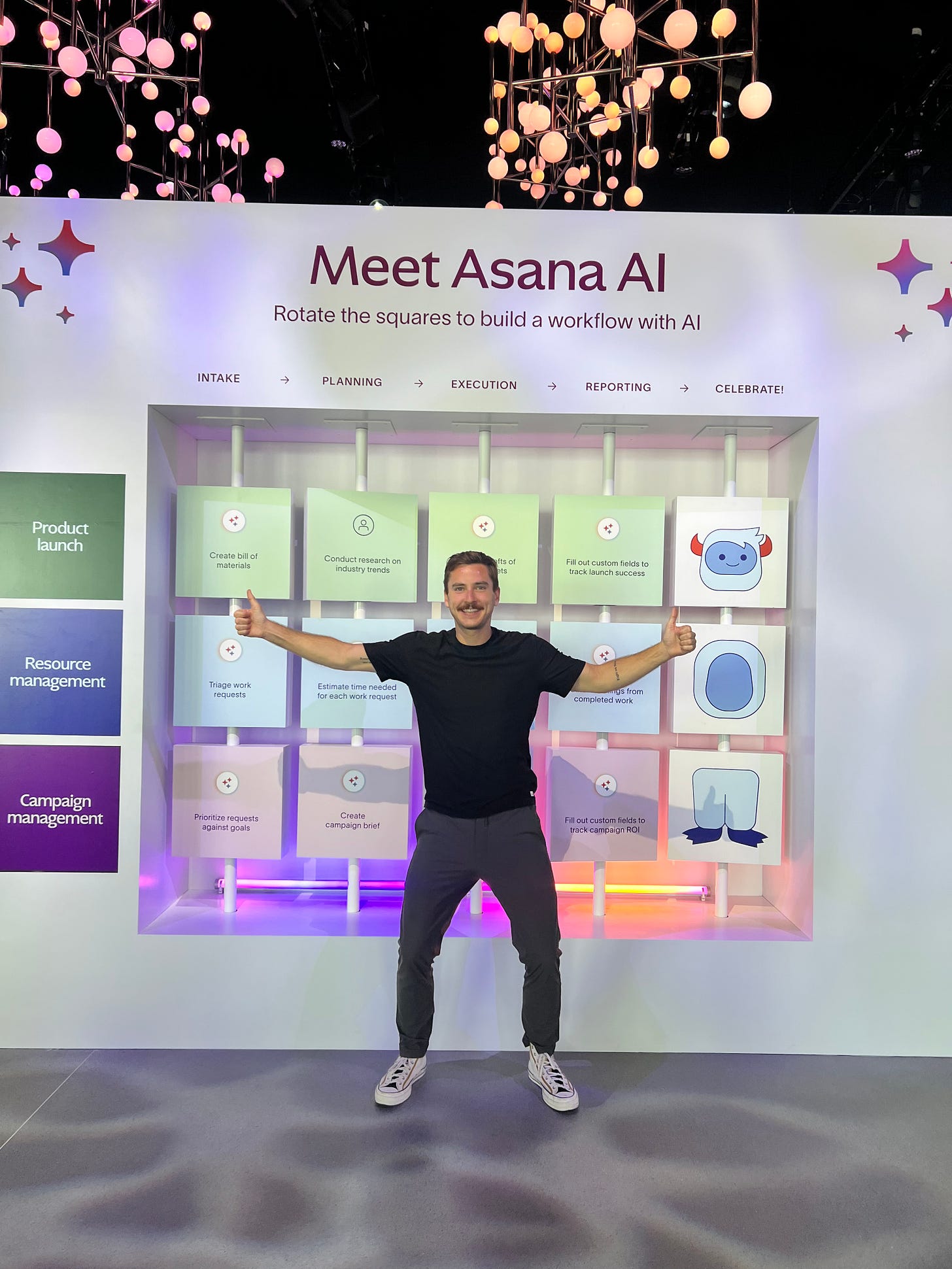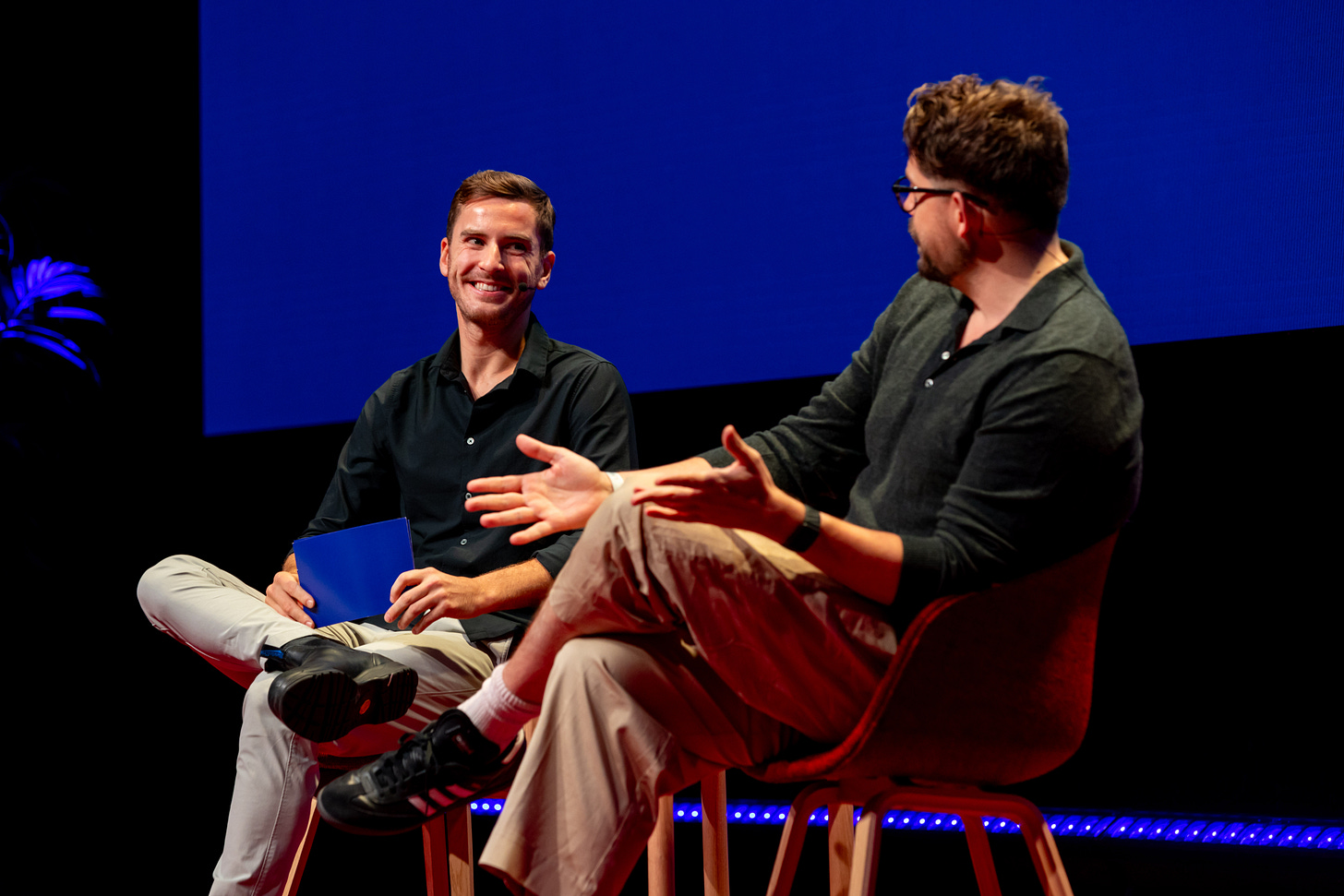Breaking the AI Barrier: How a 6th-Grade Teacher Became an AI Builder
Harnessing lessons from a Thai classroom to make artificial intelligence accessible—no coding required.
It was over 110 degrees, and I was sweating profusely during one of my days teaching in Phuket, Thailand. The whir of ceiling fans competed with excited voices as my 6th-grade students tackled challenging math and science problems together—in their second or third language.
This was my first job out of college and my students’ eagerness to learn still inspires me today, especially now, six years later, as I find myself working in a completely different field—artificial intelligence (AI)—which requires constant learning to keep up with how fast things are moving.
If you've ever felt you’re not technical enough to harness AI, you're in the right place.
Information Processed transforms complex, technical AI concepts into practical, actionable skills for no-code builders of all skill levels—through free, education-focused content designed for professionals who want to thrive in the modern workplace.
Whether you’re just getting started with AI or you've been building for years, you'll learn new ways to harness AI’s potential without writing a single line of code.
Every two weeks, I'll share a new (free) post filled with insights, tutorials, and real-world applications that demystify AI for non-technical professionals interested in developing new skills for this new era of work.
In this initial post, I’ll share details on my personal journey into working on AI full-time and lay out what you can expect from this blog going forward.
My story shows that anyone can dive into AI—especially with the right tools and a healthy dose of curiosity.
Why AI Matters for Everyone in 2025
Before we dive into the technical details, let's address some common concerns:
"AI Will Replace Me" - First off, you are so much more than your current job description, so I really dislike this phrase to begin with. In every new technological era, job shifts have occurred, and that will happen again with AI—but not in the dramatic way that the media often portrays. I believe the best AI technologies in the long term will 10x people by equipping existing experts with AI agents rather than using AI agents to replace humans.
As Peter Thiel, co-founder of Paypal and Palantir, notes in his book Zero to One: “Computers are complements for humans, not substitutes. The most valuable businesses in the coming decades will be built by Entrepreneurs who seek to empower people rather than wtry to make them obsolete.” That being said, if you’re genuinely concerned, the best thing you can do is learn this skill set and future-proof your role for the new era of work.
"I'm Not Technical Enough" If you can use everyday software (including social media), you can learn to build AI tools for yourself. Modern no-code platforms eliminate the need for programming knowledge.
"It's All Just Hype" While some areas of AI are overhyped, others are underappreciated. I’ve witnessed firsthand the real productivity gains and error reductions possible with thoughtfully implemented AI. The worst thing you can do is ignore AI altogether just because some aspects are overhyped.
With these concerns addressed, let me share how my path from a classroom in Thailand led to co-creating Asana’s AI Studio.
Chapter 1: The Global Teacher's Path to AI
From Thailand to COVID Chaos
I graduated from the University of South Carolina in May of 2018 and hopped on a plane to Phuket in September. For the next year, I taught 25 enthusiastic 6th graders and soaked in the amazing Thai culture.
The students’ ability to grasp complex concepts in a foreign language showed me the power of well-designed learning environments—a lesson that would later shape my passion for making AI accessible.
Once that chapter ended, I embarked on a six-month backpacking journey across 15 countries in Asia, fueled by the savings I had from teaching.
By February 2020, I was back in the United States—with my bank account drained to about $0—just in time for the pandemic to hit.
It was challenging trying to start my career during months of widespread hiring freezes, but I finally landed at Deutsche Bank in corporate finance. I managed the daily transactions of four mutual funds with billions in actively traded assets, and it was shocking to see the amount of money I was helping to move from investment to investment.
It was a stark change from the beaches of Thailand and the dizzying pace of backpack travel, but I was grateful for stability in uncertain times. At the same time, I found myself wondering if there was a career path that blended human connection, innovation, and global perspective.
Power Tools and a Lockdown in Vietnam
After a few months in finance, a new opportunity appeared: Techtronic Industries (TTI), owner of Milwaukee and Ryobi Power Tools, offered me a field sales role.
I left Deutsche Bank to represent these products across the D.C., Maryland, and Virginia region. I spent my days making deals with local contractors and large buyers, learning more about supply chains, the construction industry and industrial sales than I ever expected.
Five months later, in January 2021, TTI promoted me to a global program manager position and relocated me to Ho Chi Minh City, Vietnam, where I moved in April 2021. Unfortunately, this coincided with the arrival of the Delta variant.
Virtually overnight, the city went into one of the strictest lockdowns in the world. For months, I was unable to leave my apartment. Streets were barricaded, and street food vendors and grocery stores were shut down (the military was delivering ration packages when I left). Daily routines became a constant negotiation with rapidly changing regulations.
The usual symphony of motorbike horns and street vendor calls fell silent. My 4th-floor apartment became both office and fortress, the humid air heavy with uncertainty. Through my window, I watched as the vibrant chaos of Ho Chi Minh City’s District 1 transformed into an eerie stillness, broken only by the occasional megaphone announcements echoing through empty streets.
Despite the isolation, I immersed myself in the intersection of product development and global manufacturing—coordinating everything from battery-powered lawnmowers to snowblowers. I worked with teams worldwide to ensure new product designs could become mass-produced realities. Even amid a communal sense of crisis, we pushed projects forward, solving logistical puzzles day by day.
That experience sharpened my appreciation for how global teams can come together—under extreme pressure—to accomplish something tangible.
Chapter 2: Pivot to Tech & the AI Spark
Leaving Power Tools for Tech
With lockdowns intensifying week after week and my mental health deteriorating, I decided to call it quits in September 2021 and head back to the US with nothing lined up.
Back in the US, I found myself drawn to the tech industry—a world that had fascinated me since childhood but seemed inaccessible growing up in Silver Spring, Maryland.
Without any connections in the industry, I landed an entry-level role at Asana—an organization I knew little about but that had a great reputation—as a Sales Development Representative (SDR). I arrived in San Francisco on January 1, 2022, to restart my career and life, exactly three years ago to the day.
I spent my first year at Asana engaging with dozens of teams from some of the largest and most innovative companies in the world (mostly FAANG). I dove deep with so many incredible teams doing so many different types of work, and I learned a tremendous amount about the broad range of sophistication of how work gets done at different organizations.
Meanwhile, something else was brewing behind the scenes that would change my life: the meteoric rise of Large Language Models (LLMs).
An AI “Aha” Moment
Eleven months into my time in San Francisco, once I had the opportunity to settle in a bit, GPT-3 was released to the public. I’ll never forget the first time I asked it to draft a basic email in late 2022.
While my initial encounters with earlier models were underwhelming, everything changed on March 14, 2023—the day GPT-4 was released.
It shocked me with its near-human command of language. This was more than just a novelty—it felt like a glimpse into the future of knowledge work.
Skeptical as I was, it was clear each new version was improving at an astonishing pace. Eventually, I began to see a pattern: with the right structure and oversight, AI could handle repetitive, text-heavy, information-processing tasks, freeing humans to do more creative, strategic work.
It was clear that this would be the foundational principle of the radical global AI transformation all of the experts had been describing was coming
I went home from work that night and started telling anyone who would listen that “AI is all that matters.” I began dedicating every minute I had outside of either working, going to the gym/yoga, and/or hanging with friends to learn everything I could about AI and related topics.
I thought back to my time at Asana consulting for all of those different teams, my experience in Thailand grading papers, my work at Deutsche Bank processing financial transactions, and my role coordinating global manufacturing projects—so many tasks that could have been streamlined with well-configured AI.
Chapter 3: The Origins of AI Studio
From SDR to AI
In my second year at Asana, I was promoted to help co-manage six of Asana’s largest customers, including the three largest. I was constantly bottlenecked by the limitations of how much I could scale myself, which led me to design my first few custom AI tools to help in that role.
A few early wins led to more building, more learning, and ultimately co-developing my current role with the leadership team at Asana, allowing me to work full-time on deploying AI internally across Asana’s Business Organization (Sales, Marketing, Customer Success, etc.).
I’ll share more details about this role—lessons learned, use cases deployed, and more—in a future post.
A Pivotal Slack Conversation
As I was settling into this new AI role and evaluating no-code AI automation options, I realized the platform I really wanted to build AI workflows on was Asana itself.
This epiphany led to a pivotal Slack conversation with Joshua, an exceptional engineer at Asana, about using AI to automate mundane tasks within the sales organization.
Our discussion sparked a bigger vision: embedding AI directly into Asana’s interface, allowing anyone to build custom automations without coding.
That seed grew into AI Studio, designed to fill a crucial gap in existing platforms by focusing on thoughtful human-in-the-loop interactions for AI actions and AI-generated content.
Democratizing AI for Non-Engineers
If you’re reading this as a non-technical professional, maybe you’ve wondered, “Is AI really accessible to me?” My answer is a resounding yes.
Modern no-code platforms make it possible to harness AI without writing a single line of code. Rather than rummaging through Python scripts, you design automation flows via an intuitive interface.

Yes, there are new skills to learn, including:
Prompt Engineering (writing clear instructions for AI)
A No-Code Automation Platform
Identifying Which Use Cases AI Is Ready For (and which it’s not)
But you might be amazed how easy those skills are to learn in 2025.
Bias Disclosure: Asana’s AI Studio
Multiple no-code AI automation platforms exist, but I will primarily highlight Asana’s AI Studio (in addition to other AI tools I use daily).
Why? Because I helped co-create it and I truly believe it’s the best (we built it to fill a major gap in existing platforms).
What makes Asana’s AI Studio unique is its focus on human-in-the-loop workflows—ensuring that AI remains a tool to augment human expertise rather than replace it.
Think of it like having a highly capable assistant who prepares drafts and analyses for your review, maintaining quality while saving you time.
Asana AI Studio is essentially a builder hub for AI-powered processes:
- Design automations through an intuitive interface
- Configure AI to handle specific tasks
- Route outputs to real people for review
- Deploy complex, multi-step, collaborative workflows in under an hour
For example, you can build a no-code system that:
Analyzes an inbound request and categorizes it by urgency and type
Generates a structured brief including relevant product features and potential solutions
Routes it to the appropriate team member with an AI-generated summary
Creates a draft response for human review
Schedules the necessary follow-up tasks
What once took 45 minutes of manual processing now takes 5 minutes of human review and refinement.
Now that Asana’s AI Studio is live in the world, with thousands of people building with it, I’ve seen firsthand how it helps teams integrate AI into their existing workflows without complicated setups. Complex workflows can be designed and deployed in less than an hour.
However, I want to emphasize: Information Processed is a personal passion project, not a promotional channel for any one product. You can take what I share and apply it using AI Studio—or any other no-code AI automation platform you prefer.
I’ll write a future post focused on the considerations I had when evaluating no-code AI automation platforms before we built AI Studio. My hope is that it helps you make an informed decision on which platform to learn and build on.
The Future of Information Processed
Every two weeks, I’ll share an article with practical insights about building with AI, including (but not limited to):
Hands-On Tutorials: Step-by-step guides for creating AI workflows
Real-World Case Studies: How different industries are leveraging AI today
Industry Analysis: Clear, jargon-free breakdowns of the latest AI developments
Best Practices: From prompt engineering to workflow design
Two weeks from today, I’ll release a post I’m working on that deep dives the most important events that occurred in AI in 2024 that are relevant for no-code builders.
Let me know in the comments below if there are any topics you’d want to learn about specifically.
Join the Journey
When I think back to teaching in Phuket, I’m reminded that learning what seems impossible just requires the right approach. That same principle applies to mastering AI tools.
Today, I’m excited to help you harness AI’s potential, regardless of your technical background. Whether you’re looking to:
Automate repetitive tasks
Enhance your team’s productivity
Stay ahead of technological change
Or simply understand what’s possible with AI
Information Processed will provide practical, actionable insights every two weeks.
PS: This content will continue to improve as I dedicate as much of my free time to becoming a better educator, writer, and more advanced AI builder.
I hope you'll follow along for the journey, subscribe for free to receive email notifications whenever a new post goes live, and consider sharing with someone you know is curious about learning more about AI this year.
Take Action Now:
Subscribe to never miss an update.
Share this post with colleagues curious about AI.
Drop a comment about what you’d like to learn or automate—I read every comment.
My journey from teaching to tech has taught me that we can all adapt and thrive with the right resources and mindset.
See you in two weeks for a detailed recap of the most important stories from AI in 2024 for no-code builders.











